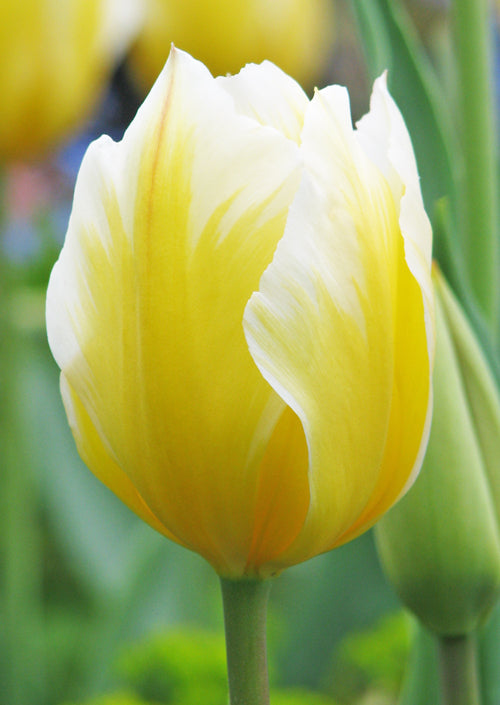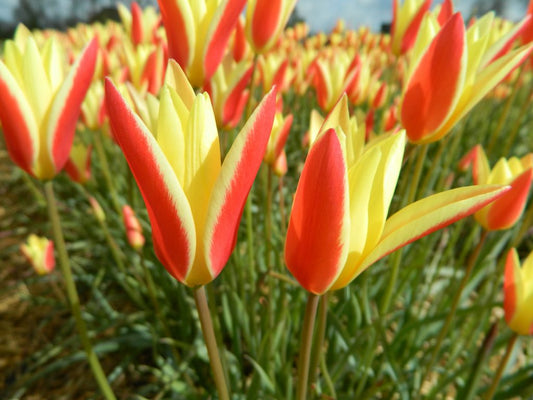Collection: Tulips
Long-stemmed tulips and botanical tulips
Our tulip range includes long-stemmed varieties that can also be used as cut flowers in addition to garden tulips, and a number of so-called botanical varieties. These are closer to the wild tulip species. They are generally less suitable as a cut flower, but can be planted well in pots and containers. Planted in the garden they can naturalise under the right conditions.
There are three groups of botanical species: Kaufmannianas, Greigiis and Fosterianas.
Kaufmannianas have yellow pollen and are frequently visited by bees and bumblebees in the spring (they bloom very early). Greigii's have dark striped leaves. Tulip Pedro is particular striking in that respect, making it a decorative plant even before flowering. Fosterianas are somewhat higher than the Kaufmannianas and Greigiis and have a striking slender flower shape.
If you want to bring tulips into bloom inside your home, Ancilla and Portland are the most suitable varieties. Other species grow very tall indoors. Tulipa Tarda is a specie tulip. That is a wild species that has not been created by crossing.
Naturalisation of tulips
There are many misunderstandings about the naturalisation of tulips. None of the tulips really naturalise (expand). Our climate is simply too different from the natural habitats of the tulip (Central Asia) for that. However, some species will last longer in the border than others if you just leave them. The condition is that you remove the faded flower (heads) after flowering and make sure enough light, water and nutrition is there for another four weeks to form a new bulb that is large enough to bloom again the following year. This works best with varieties that put all their growing power into one new bulb. If a tulip produces several new bulbs, they will often remain too small in the garden to bloom. After a few years you will then only find a bunch of so-called single leaves without flowers. Species that we can recommend for permanent planting include AdRem, Ile de France, Inzell and Yokohama.
A well-known combination of tulips with perennials is (large-leaved) forget-me-not with pink tulips, as can be seen in photos of Monet's garden in Giverny. From our range, Pink Impression is a pink tulip that is large enough for this and will last for years.
Tulips as an annual
If you use tulips as annuals, you have two options. The first: you take the plants with the bulbs out of the ground after flowering and you throw the bulbs away in the green bin. The second: you try to keep the plants in good condition as long as possible after flowering and you dig up the bulbs when the plant starts to die. Store the largest bulbs (circumference more than 8 to 9 cm) in a dry and airy place to plant them again in the autumn (in a different location due to soil diseases). The success of this depends strongly on the local circumstances.
As a cut flower (in the vegetable garden)
If you have a vegetable garden, you can very well grow a sea of cut flowers on a few square meters during the season when there is still room left next to kale and leeks. For cutting you can store 100 to 150 tulips per square meter. You plant the tulips somewhat more shallow than in the border (about 2 cm of soil above the bulbs), so that you can pull the plant (bulb and all), out of the ground when harvesting. If you harvest the flower, the new bulb has no chance of becoming large enough for another year.
-
Tulipa 'Sweetheart'
Regular price From €59,00 EURRegular priceUnit price / per -

 Sold out
Sold outTulipa Siesta
Regular price From €24,50 EURRegular priceUnit price / per -

 Sold out
Sold outTulipa Royal Virgin
Regular price From €24,50 EURRegular priceUnit price / per -

 Sold out
Sold outTulipa Columbus
Regular price From €26,75 EURRegular priceUnit price / per -
Tulipa 'Apricot Impression' (H)
Regular price From €59,00 EURRegular priceUnit price / per -

 Sold out
Sold outTulipa sylvestris
Regular price From €20,25 EURRegular priceUnit price / per -
Tulipa clusiana 'Tinka'
Regular price From €16,25 EURRegular priceUnit price / per -
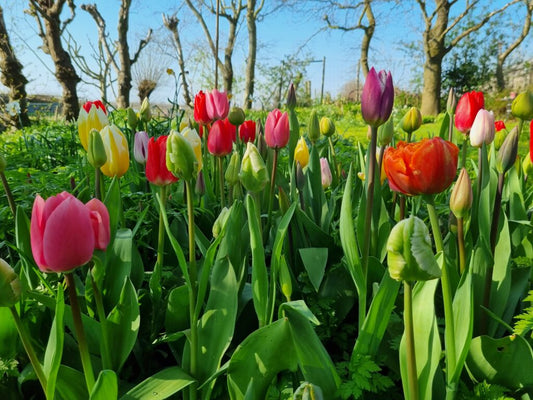
 Sold out
Sold outNEW: Tulip cut flower mixture
Regular price €100,00 EURRegular priceUnit price / per -
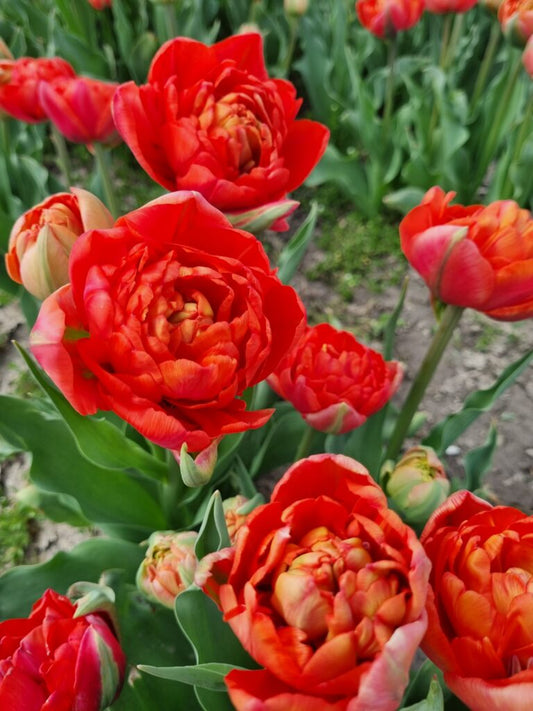
 Sold out
Sold outNEW: Tulipa Andante
Regular price From €30,00 EURRegular priceUnit price / per -

 Sold out
Sold outNEW: Tulipa Carola
Regular price From €26,75 EURRegular priceUnit price / per -
 Sold out
Sold outNEW: Tulipa 'Groenland'
Regular price From €27,75 EURRegular priceUnit price / per -
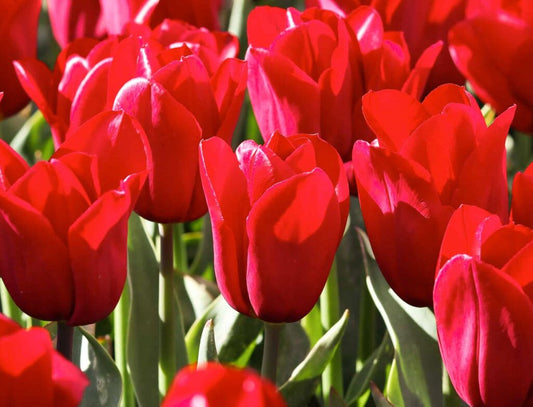 Sold out
Sold outNEW: Tulipa Strong Love
Regular price From €21,25 EURRegular priceUnit price / per -
NEW: Tulipa 'Formosa' (H)
Regular price €59,00 EURRegular priceUnit price / per -
 Sold out
Sold outTulipa 'Ad Rem’
Regular price From €26,75 EURRegular priceUnit price / per -
 Sold out
Sold outNEW: Tulipa Ancilla
Regular price From €30,00 EURRegular priceUnit price / per -
 Sold out
Sold outTulipa bakery 'Lilac Wonder'
Regular price From €16,25 EURRegular priceUnit price / per -

 Sold out
Sold outTulipa 'Judith Leyster' (H)
Regular price From €59,00 EURRegular priceUnit price / per -

 Sold out
Sold outTulipa 'Freedom Flame'
Regular price From €27,75 EURRegular priceUnit price / per -
Tulipa 'Fire Clay' (H)
Regular price From €59,00 EURRegular priceUnit price / per -

 Sold out
Sold outTulipa 'White Rebel'
Regular price From €30,00 EURRegular priceUnit price / per

